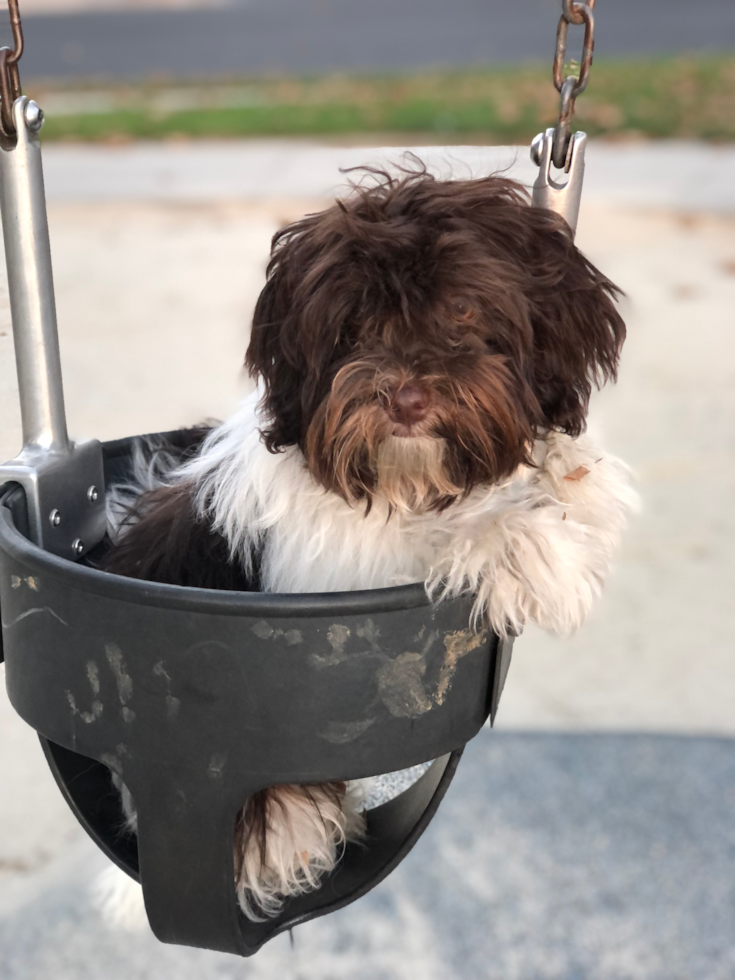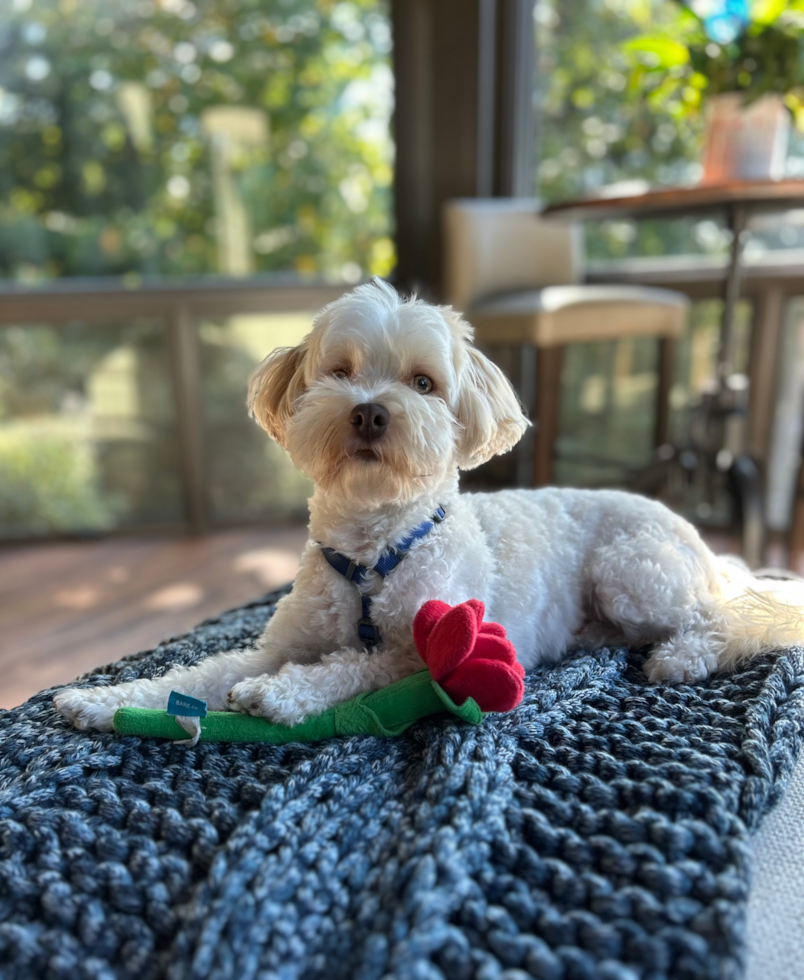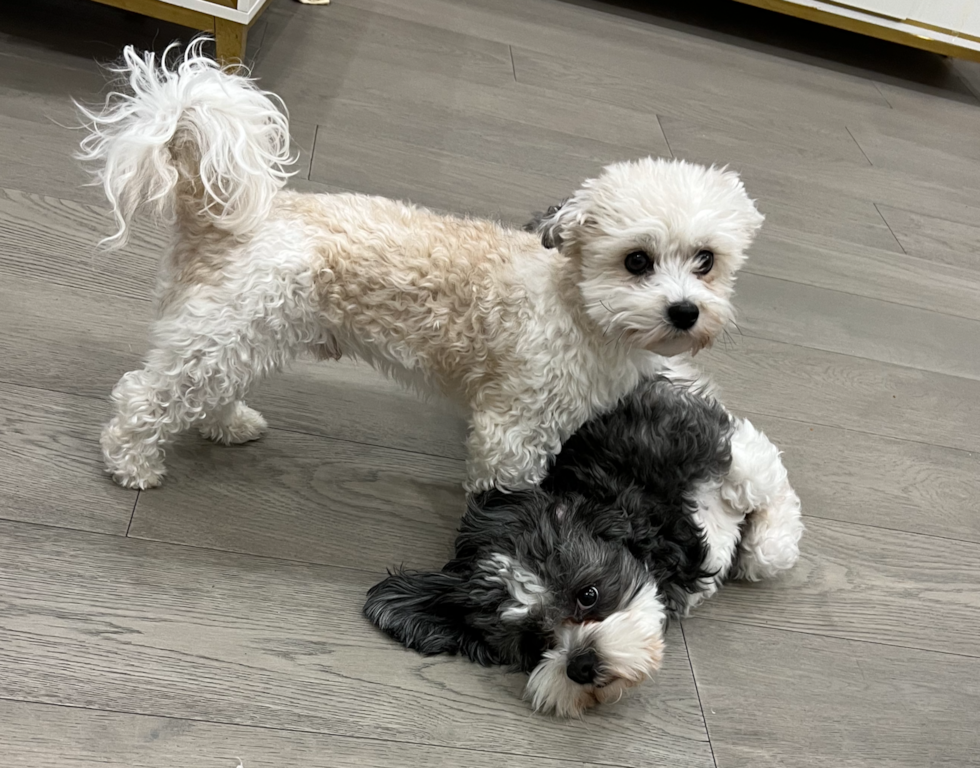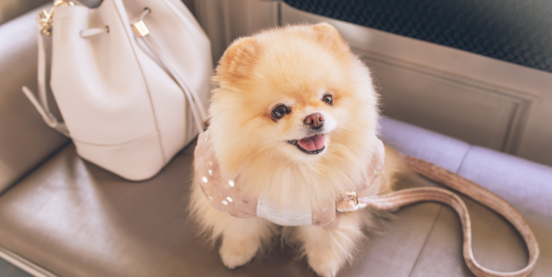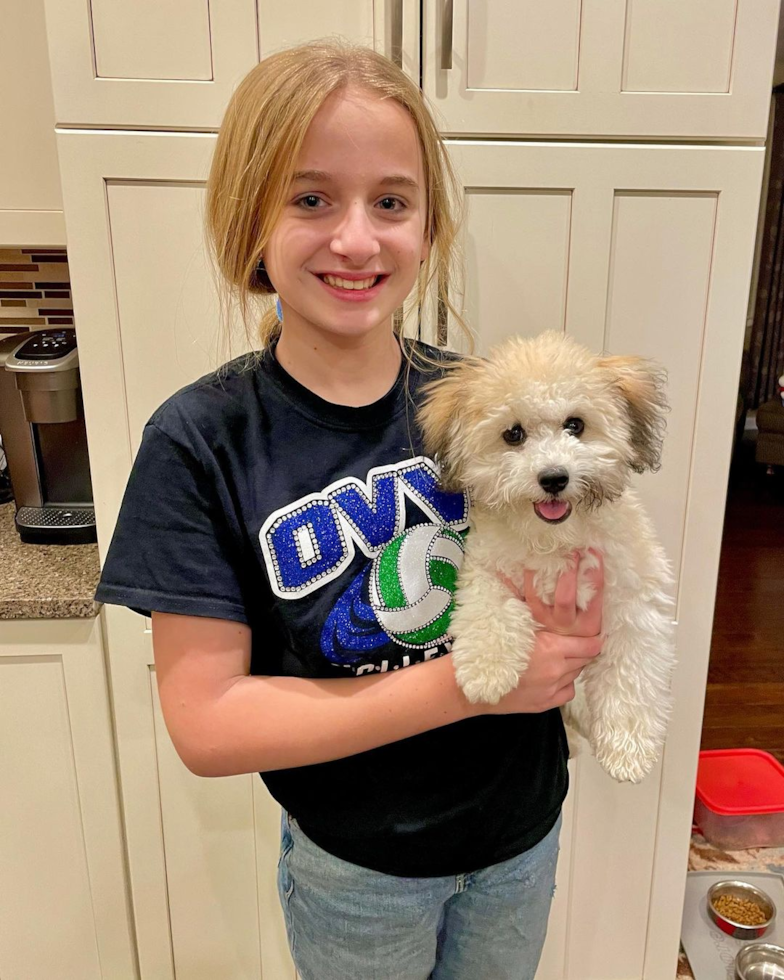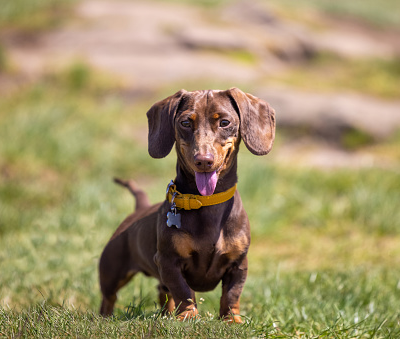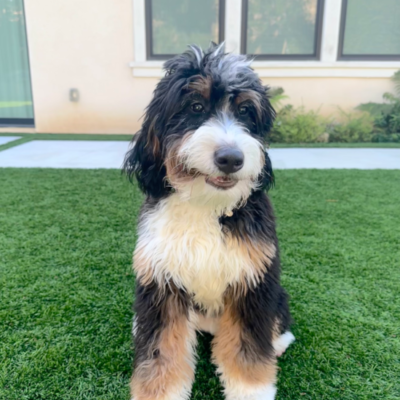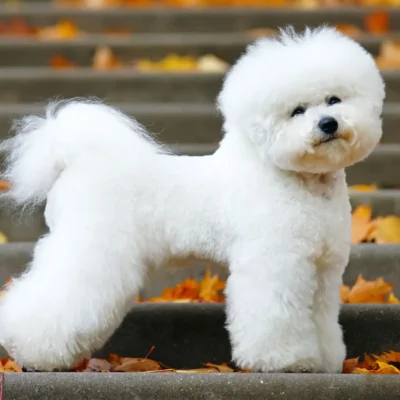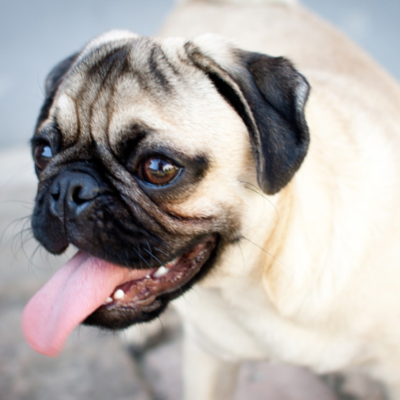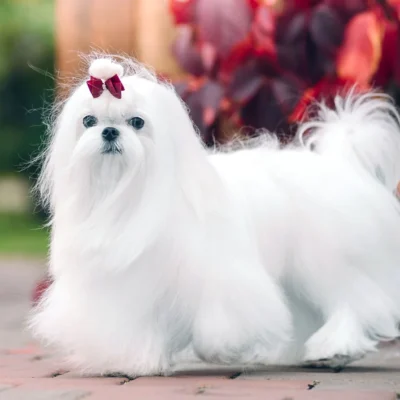
Known as the national dog of Cuba and adored around the world, the Havanese is a breed that brings joy wherever it goes. With their friendly nature, gorgeous silky coats, and deep affection for their humans, these pups are more than just cute — they’re pure heart-stealers. Their easygoing personalities and small size make them ideal companions, whether you live in a cozy apartment or a spacious home. But ask any Havanese owner what truly sets them apart, and you’ll hear the same thing: it’s the love, warmth, and happiness they bring into your life.
A proud member of the Bichon family, the Havanese comes from a long line of companion dogs, and it shows. With their expressive eyes, flowing coats, and lively personalities, they have a way of instantly charming everyone they meet. They’re incredibly social dogs, known for getting along beautifully with children, adults, and even other pets — making them a perfect fit for all types of households.
Despite their petite build, Havanese dogs are surprisingly sturdy and resilient. They’re playful and energetic without being overwhelming, and they adapt beautifully to their owner’s pace — whether that’s a laid-back lifestyle or one filled with daily adventures.
| Attribute | Details |
|---|---|
| Same As | |
| Breed Type / Mix | Purebred |
| Life Span | 12-14 yrs |
| Training | Responsive |
| Shedding | Minimum |
| Energy | Low Energy |
| Temperament | Affectionate, Alert, Confident, Loyal, Sociable |
| Adult Weight | 7-13 lbs |
| Adult Height | 9-12 in |
- Social Butterfly: Havanese puppies are friendly and charming, easily making friends with people and other animals.
- Intelligent and Agile: Quick learners enjoy mental stimulation to prevent boredom and destructive behaviors.
- Vocal Communicator: Known for their vocal nature, they express emotions freely; training helps manage excessive barking.
- Compact and Sturdy: Small yet robust, they adapt well to apartment living and enjoy family activities and outdoor adventures.
- Devoted Companion: Highly loyal, Havanese form strong bonds and may experience separation anxiety if left alone too long.
- Adaptable: Comfortable in various living environments and weather conditions, from apartments to rural homes.
- Vibrant Coat: Their long, silky coat comes in various colors, patterns, and lengths, offering a unique appearance.
- Affectionate and Good-natured: Known for spreading joy, they are loving and positive companions.
- Active but Not Hyperactive: They require moderate exercise, with a few walks and play sessions each day to stay content.
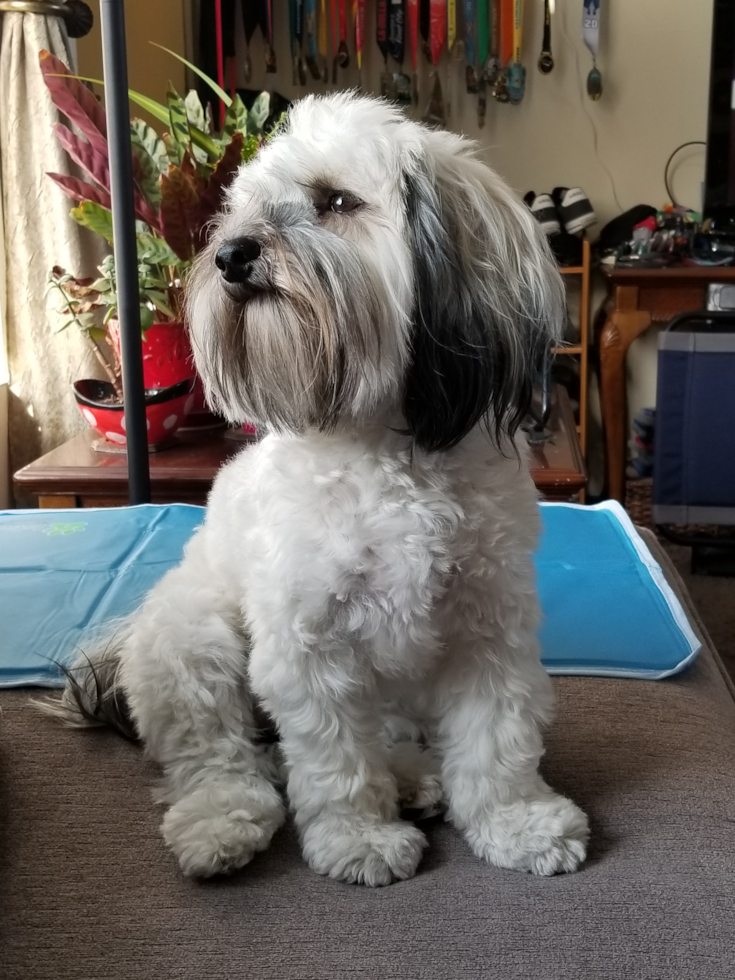
The Havanese is a small yet sturdy dog breed that captivates with its unique and charming appearance. Recognized for their silky, wavy to curly coats, these dogs often have long fur that’s incredibly soft to the touch. Their coats naturally grow with gentle waves or curls, creating a tousled yet endearing look.
These affectionate dogs are often compared to teddy bears due to their fluffy coats and expressive eyes. Havanese come in a wide array of colors, ranging from white, cream, and champagne to black, gold, blue, silver, and chocolate, often in varied combinations. An intriguing aspect of the breed is the potential for color changes as they mature, with their coats sometimes darkening or lightening over time.
The Havanese move with a light, springy gait that mirrors its lively spirit. Standing between 8.5 and 11.5 inches tall and weighing between 7 and 13 pounds, they make excellent companions, especially for apartment living or smaller spaces.
One of the breed’s standout features is its long, silky tail, which is carried elegantly arched over the back. Their dark, almond-shaped eyes convey warmth and intelligence, enhancing their already irresistible look. The ears, drooping and set high, are also covered in long fur, complementing their facial features.
With a body that’s slightly longer than tall, the Havanese has a sturdy frame hidden beneath its lush coat. Their rounded, short muzzled heads and distinct stops add to their overall cute and playful appearance. Combined with their energetic, agile movements, the Havanese create the picture of a lively, affectionate companion that’s hard to resist.
Havanese dogs are celebrated for their affectionate and friendly nature, making them beloved family companions. Highly sociable, they thrive in environments where they can interact with their human family members. Unlike some other small breeds, Havanese are not overly yappy or demanding. Instead, they have a steady and easygoing temperament, forming strong bonds with their families and often following their owners from room to room, eager to be part of the action.
These dogs are particularly good with children and other pets, thanks to their patient and gentle demeanor. This makes them an excellent choice for families, as they are typically calm and tolerant, even around young children. Their sociable nature also means they usually get along well with other pets, including dogs and other species. However, as with any dog, it’s important to supervise interactions between young children and dogs to ensure everyone’s safety.
Havanese dogs are also known for their intelligence and eagerness to please, which contributes to their generally good behavior. They are highly responsive to their owners, making them relatively easy to train. However, they can sometimes exhibit a streak of stubbornness, common among small breeds. Using consistent, positive reinforcement methods is typically the most effective way to train a Havanese.
Because of their social nature, Havanese dogs don’t do well being left alone for long periods. They can develop separation anxiety, leading to destructive behaviors or excessive barking. To keep them happy and well-adjusted, it’s important that owners provide plenty of stimulation and companionship throughout the day.
Overall, with their loving temperament, intelligence, and adaptability, Havanese dogs make wonderful pets for singles, couples, and families alike. They are loyal companions who will bring joy, warmth, and plenty of tail-wagging to any home.
Grooming
The Havanese breed is known for its luxurious silky coat, which requires regular care to stay healthy and free of mats. Their double coat is soft, with the topcoat being slightly heavier than the undercoat. While Havanese dogs are considered hypoallergenic, their long hair still requires frequent grooming.
Daily brushing is essential to remove loose hair and to distribute natural oils across their coat, which keeps it shiny and smooth. A high-quality slicker brush and a comb with both wide and narrow teeth are recommended. Pay special attention to common areas where tangles can form, such as behind the ears, under the armpits, and in the groin area.
Bathing should be done every 4 to 6 weeks using a mild dog shampoo to prevent stripping the natural oils. Follow up with a conditioner to keep the coat silky and soft. After bathing, be sure to dry their ears thoroughly to prevent infections.
Havanese dogs are also prone to tear staining, so regularly check and clean their eyes with a soft, damp cloth. Their teeth should be brushed regularly, ideally daily, using vet-approved toothpaste to ensure good oral health.
If maintaining the long coat becomes too time-consuming, many owners opt for the “puppy cut,” where the coat is clipped short. This reduces grooming time but still requires regular brushing to avoid matting.
Additionally, regular nail trimming is necessary to prevent overgrowth and splitting, which can be painful. Use a dog nail trimmer or grinder to clip the nails every few weeks. Grooming sessions are a great time for bonding, and many dogs enjoy the attention.
Exercise Needs
Havanese dogs, though not as high-energy as some breeds, still need daily exercise to stay physically fit and mentally stimulated. Regular activity helps keep them happy and healthy. Daily walks are ideal, as they provide both physical exercise and mental stimulation. Havanese love to explore and sniff out new scents, which keeps them mentally engaged. Two short walks a day plus playtime typically suffice for this breed.
Playtime is an important part of their daily routine. Games like fetch, tug-of-war, and puzzle toys are great ways to keep them entertained. Even a simple game of chase is a fantastic way to burn off excess energy.
Havanese are adaptable and can thrive in various living situations, including apartments, as long as their exercise needs are met. They are excellent jumpers and climbers, so a secure play area is essential. Due to their intelligence, Havanese also enjoy mental stimulation, so learning new tricks can be a fun and rewarding way to engage them.
However, because of their thick coats, they can overheat, especially during hot weather. Make sure they have access to fresh water and shade, and avoid vigorous exercise during the hottest part of the day.
Health
The Havanese breed is generally healthy but can be prone to certain conditions. Allergies, both food-related and environmental, are common, with symptoms like itching, redness, and digestive problems. Regular veterinary visits can help manage these conditions.
Cataracts, a condition where the lens of the eye becomes opaque and affects vision, can also affect Havanese. Regular eye check-ups are crucial for detecting and treating cataracts early.
Reputable breeders screen for common health problems, providing health clearances for conditions such as cataracts and allergies. It’s important to ask for these clearances when purchasing a Havanese to ensure you are getting a healthy puppy.
Lifespan
Havanese dogs are known for their impressive lifespan, living on average between 14 and 16 years. Their longevity is influenced by their strong genetic background, and they tend to be less prone to serious genetic disorders. A well-balanced diet is crucial to maintaining their health and longevity. Small, frequent meals that provide essential nutrients help keep their metabolism efficient and their weight under control.
Despite their small size, they need regular exercise to stay healthy and avoid obesity, which can shorten their lifespan. Mental stimulation through activities like puzzle games and training is also essential to keep them sharp.
Regular veterinary check-ups are important for identifying potential health problems early. Conditions such as heart diseases or liver disorders can be treated more effectively with early intervention.
A loving, nurturing environment contributes significantly to their emotional well-being, which in turn impacts their physical health and lifespan.
Training
Training Havanese is a rewarding experience. They are intelligent, eager to please, and generally respond well to positive reinforcement techniques. It’s important to use rewards like treats, praise, or playtime to encourage good behavior. Harsh corrections can cause anxiety and fearful behaviors, so a gentle approach is always best.
Starting early with socialization is key. Exposing a Havanese to different people, animals, and environments during their puppyhood helps them grow into confident, well-adjusted adults. Potty training should begin as soon as your Havanese enter your home, and consistency is crucial.
Once basic commands like “sit,” “stay,” and “come” are mastered, you can gradually introduce more advanced commands and tricks. Havanese also excel in activities like agility, obedience, and rallying. Training should be a fun and enjoyable experience, with a focus on maintaining a positive, patient attitude.
Training your Havanese to walk on a leash without pulling is another important aspect of their education. Using a front-clip harness can help reduce pulling and make walks more enjoyable for both of you.
Havanese can be vocal, so it’s important to teach them a “quiet” command early on to manage excessive barking. Reinforce quiet behavior with rewards to avoid encouraging unwanted barking. If necessary, seek professional training help to address any behavioral concerns.
Training not only improves behavior but also strengthens the bond between you and your Havanese, setting the foundation for a lifetime of companionship.
The Havanese breed has a rich and fascinating history that traces its origins back to the Mediterranean regions of Europe. As part of the Bichon family, which includes breeds like the Maltese, Bichon Frise, and Coton de Tulear, the Havanese share traits of small size and an affectionate temperament.
Initially known as the “Blanquito de la Habana” or “little white dog of Havana,” the breed was mistakenly believed to have originated in Havana, Cuba. Despite this, it became an iconic companion dog in Cuba, adored by the upper classes of the island. The Havanese’s charm quickly won the hearts of European aristocrats, particularly in Spain and France.
The breed’s journey took a dramatic turn in the 18th century when Spanish nobility and sea captains, enamored by the dogs’ gentle nature, brought them across the Atlantic to Cuba. It was in Havana, Cuba, where the Havanese truly began to evolve into the distinct breed we know today. The breed flourished in Cuba’s high society, becoming a symbol of luxury and elegance. They were often featured in family portraits, highlighting their cherished role in the lives of their owners.
However, the Cuban Revolution in the 1950s created challenges for the Havanese breed. As families fled Cuba, many brought their beloved dogs with them, including a few Havanese that made their way to the United States. These dogs became crucial in the breed’s survival, as the breed was facing the threat of extinction in its homeland.
Fortunately, dedicated breeders, particularly a couple in Florida, worked tirelessly to save the Havanese. They successfully established a breeding program to ensure the breed’s continued existence. Thanks to these efforts, the Havanese experienced a revival and eventually found a place in the homes of dog lovers across the world.
In recent years, the Havanese has also become a popular breed for crossbreeding, contributing to the rise of “designer dogs.” For example, the Havapoo, a mix of Havanese and Poodle, combines the breed’s friendly nature with the Poodle’s intelligence and hypoallergenic coat. Similarly, the Havachon, a cross between the Havanese and the Bichon Frise, inherits the playful disposition and affectionate temperament of both parents.
These crossbreeds highlight the Havanese’s versatility, as its friendly and adaptable characteristics blend well with other breeds. Whether purebred or mixed, the Havanese continues to captivate dog lovers worldwide. Today, the Havanese stand as a testament to the breed’s resilience and charm, having journeyed from European nobility to the streets of Havana, surviving revolution, and ultimately winning the hearts of families everywhere.
Is ‘Teacup Havanese’ an official breed variation recognized by the AKC? No, the American Kennel Club (AKC) only recognizes one standard for the Havanese breed (typically 7-13 pounds). ‘Teacup’ is an unofficial, often misleading marketing term used by some breeders for Havanese bred to be significantly smaller than this standard, which raises serious health and ethical concerns.
How much smaller is a ‘Teacup Havanese’ compared to a standard Havanese? While standard Havanese weigh 7-13 pounds, puppies marketed as ‘teacups’ are usually advertised to mature well under 7 pounds, often aiming for 3-5 pounds. Achieving this extreme size often involves unhealthy breeding practices.
What are the most significant health risks associated with Teacup Havanese? Breeding for extreme smallness dramatically increases risks for hypoglycemia (dangerously low blood sugar), hydrocephalus (water on the brain), open fontanels (soft spots on the skull), fragile bones easily fractured, heart defects, liver shunts, collapsing trachea, and severe dental problems.
Do Teacup Havanese still have the typical affectionate and playful Havanese personality? They often retain the Havanese desire for companionship (‘Velcro dogs’) and intelligence. However, their extreme physical fragility can lead to increased anxiety, nervousness, or fearfulness, potentially overshadowing their natural playful spirit.
Are the grooming needs for a Teacup Havanese different from a standard Havanese? The coat itself (long, silky, potentially wavy) requires the same care: frequent brushing (daily is best) to prevent mats and tangles, plus regular professional grooming. However, handling during grooming must be incredibly gentle due to their extreme fragility.
How much exercise does a Teacup Havanese require? Very minimal structured exercise. Short, gentle indoor play sessions and perhaps extremely brief, supervised outings in a safe, enclosed area are sufficient. Avoid strenuous activity, jumping, and rough play to prevent injury.
Are Teacup Havanese extremely fragile? Yes, exceptionally so. Their tiny bones can break with startling ease from falls (even off low furniture), being stepped on, or rough handling. They require a highly protected environment and constant vigilance.
What is the typical lifespan of a Teacup Havanese compared to a standard one? Due to the high likelihood of serious health complications associated with extreme miniaturization, their lifespan is often significantly shorter than the 14-16 years expected for a healthy, well-bred standard Havanese.
How often must a Teacup Havanese puppy eat to prevent hypoglycemia? Very frequently. Their tiny bodies lack reserves, making dangerous drops in blood sugar (hypoglycemia) a constant threat. Young puppies may need feeding every 2-3 hours around the clock. Owners must know the signs and have emergency sugar sources (like Karo syrup) ready.
Are Teacup Havanese suitable pets for families with young children? Strongly discouraged. Their extreme fragility makes them highly vulnerable to severe, potentially fatal accidental injury by well-meaning but clumsy children. They are much better suited for quiet, adult-only homes or families with very calm, gentle, older teenagers under strict supervision.
Do Teacup Havanese bark a lot? Havanese can be alert barkers, letting you know about visitors or strange sounds. Teacup versions are likely to retain this trait. Early training can help manage excessive barking, but some vocalization should be expected.
What is the typical price range for a puppy advertised as a ‘Teacup Havanese’? Prices are often greatly inflated, frequently ranging from $3,000 to $6,000 or more, capitalizing on the misleading “rare” or “designer” aspect. This high cost does *not* guarantee health and often supports unethical breeding.
Is house training a Teacup Havanese more difficult? It can be. Their tiny bladders require very frequent emptying, and accidents are small and hard to spot. Consistency, extreme patience, positive reinforcement, and often the use of indoor potty pads are necessary strategies.
Why do reputable Havanese breeders (like those in the Havanese Club of America) avoid breeding ‘teacups’? Responsible breeders prioritize the health, temperament, and longevity of the breed according to the official standard. They understand the severe health risks and ethical issues involved in deliberately breeding below a healthy minimum size threshold and focus on producing robust dogs.
Are Teacup Havanese more prone to dental issues? Yes, significantly. Fitting a standard number of teeth into an abnormally small jaw leads to severe overcrowding, misaligned bites, retained baby teeth, and a very high risk of early-onset periodontal disease. Diligent dental care is absolutely crucial.
Do Teacup Havanese shed? Are they hypoallergenic? Like standard Havanese, they have a low-shedding coat often tolerated by allergy sufferers, but no dog is truly hypoallergenic. Individual reactions vary. Their coat requires significant upkeep regardless of shedding level.
How should I safely handle a Teacup Havanese puppy? Always use two hands, gently supporting the chest and rear. Never lift by the legs or scruff. Prevent jumping from furniture or arms. Be constantly aware of their location to avoid stepping or sitting on them. Teach safe handling to everyone who interacts with them.
What is a healthier alternative if I want a small Havanese? Seek a responsible breeder who performs health checks (eyes, heart, patellas, hearing – BAER test) on parent dogs and breeds Havanese that fall within the healthy standard size range (7-13 lbs). Prioritize health, temperament, and ethical practices over extreme smallness.
Can Teacup Havanese live well with other pets? Only with extreme caution and constant supervision. While Havanese can be social, a teacup’s fragility means even playful interactions with larger dogs or cats could be disastrous. Any companion animals must be exceptionally calm and gentle.
Do Teacup Havanese still need mental stimulation despite their size? Yes. While physical activity must be limited, their intelligent minds need engagement. Gentle puzzle toys, short positive reinforcement training sessions, and safe exploration indoors can help prevent boredom and behavioral issues.


